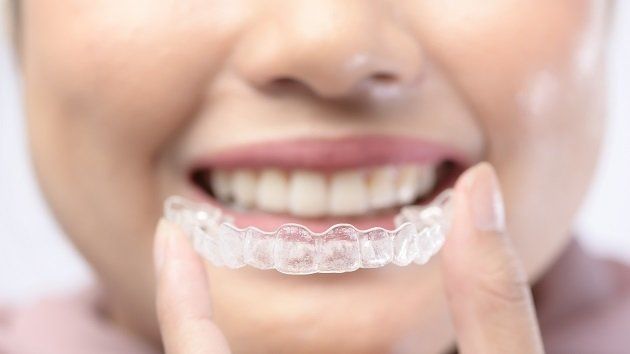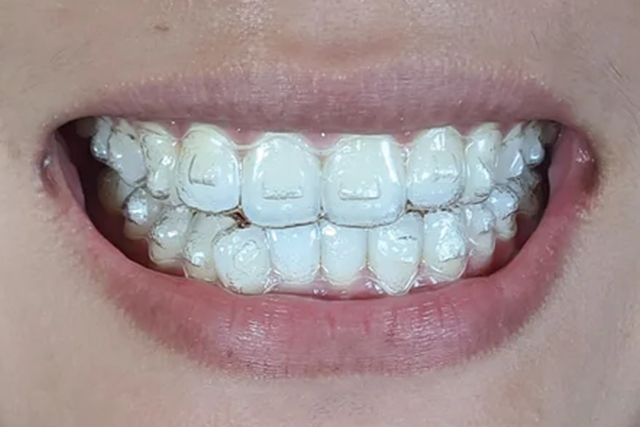How Invisalign Works: Your Guide to Clear Aligners and Their Effectiveness
Invisalign vs. Traditional Braces: Which Alternative Is Right for You?
When thinking about orthodontic treatment, the choice in between Invisalign and standard braces provides a number of crucial factors that merit careful assessment. Invisalign provides a discreet choice with removable aligners, while typical braces offer a much more noticeable yet effective remedy for extreme imbalance. Each option includes unique advantages and drawbacks connected to appearances, convenience, treatment duration, and cost. Recognizing these nuances is essential for making an informed choice that lines up with your personal choices and lifestyle. The question continues to be: which option will best fulfill your orthodontic needs and expectations?
Review of Treatment Alternatives

In comparison, conventional dental braces include steel braces and wires that are bonded to the teeth. This method applies continual pressure in time to accomplish alignment. While efficient for complicated orthodontic concerns, conventional braces need normal brows through for adjustments and can position difficulties in preserving dental hygiene as a result of the difficulty of cleaning about brackets and cords.
Both alternatives have their benefits, and the option commonly hinges on particular oral problems, lifestyle preferences, and client compliance. Inevitably, seeking advice from an orthodontic expert is crucial for establishing the most suitable therapy plan customized to individual requirements. Recognizing the nuances of each alternative can dramatically influence the general success of orthodontic therapy.
Aesthetic Factors To Consider
A significant aspect influencing the option between Invisalign and standard braces is the visual charm each therapy uses. Invisalign aligners are crafted from clear plastic, making them essentially unseen when worn.
In comparison, conventional dental braces contain metal brackets and wires, which can be a lot more noticeable. While innovations in orthodontic technology have actually resulted in the advancement of smaller braces and tinted elastics, conventional dental braces still keep an even more noticeable profile. For some individuals, the visibility of dental braces might discourage them from looking for required therapy.
Inevitably, the selection between Invisalign and standard braces might depend upon individual preferences relating to appearances. People that focus on discernment usually favor Invisalign, while those that are much less concerned regarding exposure may select typical braces. Comprehending the aesthetic effects of each option is vital for making an educated decision that lines up with one's way of life and preferences.
Comfort and Convenience

In terms of comfort, Invisalign aligners are detachable, allowing clients to appreciate their preferred foods without restriction and preserve optimum dental health. Cleaning and flossing are simplified, as the aligners can be gotten throughout these regimens, whereas traditional dental braces need careful maneuvering around cords and brackets.
In addition, Invisalign's modern system permits fewer orthodontic check outs. Individuals typically receive numerous collections of aligners at the same time, which can simplify the therapy procedure and reduce time invested in the orthodontist's chair. In contrast, standard braces demand regular modifications, making them much less practical for those with active routines. Invisalign. Overall, the comfort and comfort of Invisalign make it an attractive option for many individuals seeking orthodontic treatment.
Therapy Period and Efficiency
While both Invisalign and typical dental braces work in dealing with oral misalignments, the period of therapy can differ significantly between the two alternatives. Usually, Invisalign treatment can take anywhere from 12 to 18 months, depending on the intricacy of the situation. The clear aligners function by gradually changing teeth right into their preferred positions, and routine follow-ups with an orthodontist help guarantee progression remains on click resources the right track.
In comparison, typical dental braces usually require a longer dedication, generally varying from 18 months to three years. This is because of their set nature and making use of cords and brackets, which can be a lot more effective for severe misalignments and complex instances (Invisalign). The therapy effectiveness of standard dental braces is well-documented, as they permit for exact adjustments and higher control over tooth motion
Ultimately, the option in between Invisalign and typical braces might hinge on both the awaited treatment period and the particular oral problems available. Consulting with an orthodontist is essential, as they can offer tailored suggestions based upon individual needs, making certain the chosen technique aligns with wanted durations and end results.
Price Comparison and Insurance Coverage Choices
Price plays a substantial function in the decision-making procedure for people considering orthodontic treatment, whether deciding for Invisalign or conventional dental braces. Usually, the expense of Invisalign varieties from $3,000 to $8,000, while typical dental braces usually set you back between $2,000 and $6,000. Factors affecting these prices consist of the intricacy of the case, the period of treatment, and geographical area.
Lots of dental insurance plans supply partial insurance coverage for orthodontic therapies, however the specifics can differ commonly. Normally, conventional dental braces might be more often covered by insurance policy plans compared to Invisalign, which some insurance companies classify as an aesthetic treatment.
Additionally, numerous orthodontic techniques offer versatile repayment plans, making both therapy choices extra available. Individuals need to ask about possible financing choices and discounts for upfront payments. Evaluating the total expense, including insurance benefits and repayment strategies, is important for making an informed choice that lines up with both aesthetic choices and spending plan factors to consider.

Conclusion
In summary, the selection between Invisalign and typical braces rests on several variables, consisting of aesthetic choices, comfort, treatment duration, and price. Invisalign uses a discreet, removable option that facilitates dental health and nutritional versatility, while standard dental braces may be preferable for intricate oral problems and frequently come with a visit this website reduced cost factor. Ultimately, assessment with an orthodontist is necessary to assess private situations and identify the most appropriate treatment alternative for achieving optimum oral positioning.
When thinking about orthodontic treatment, the option between Invisalign and standard dental braces offers a number of crucial variables that warrant cautious assessment.Contrasting Invisalign and standard dental braces discloses distinctive therapy options for orthodontic improvement.While both Invisalign and traditional dental braces are reliable in remedying oral imbalances, the period of treatment can differ considerably between the two alternatives.Expense plays a significant duty in the decision-making process for people taking into consideration orthodontic treatment, whether choosing for Invisalign or standard you could look here dental braces.In summary, the choice between Invisalign and traditional braces pivots on numerous elements, including aesthetic choices, comfort, therapy period, and expense.